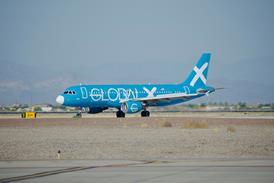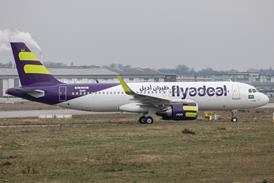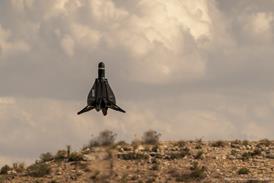Caroline Larmaraud studied interior architecture and design in Paris for five years. Her interest in business jets persuaded her in 1998 to pursue a career as an interior designer with Dassault
What sparked your interest in business aircraft cabin design?
I've always been attracted by what I call "beautiful things", those objects that require long hours of work and real skills. Craftsmanship is a French tradition and working on the interior of Dassault's Falcon business jet was an opportunity for me to bring my passion for design to such a fabulous product.
What does your job entail?
Defining and designing an interior takes several months, during which time we help with the choice of cabin layout, materials and finishing, but also the furniture, the seats, the paint scheme. Each time, our goal is to design a cabin that is beautiful and enjoyable and will remain valuable for years. That is why we monitor the completion process and come back to the customer when necessary to adjust some choices according to safety and security standards. Our goal to make sure that the customer's choices are respected and fulfilled.
 |
|---|
© DassaultLarmaraud: bringing experience in architecture and design to aviation |
What are the most challenging aspects of your job?
Passengers can spend a long time on board our Falcons, so it is crucial that the cabin layout, equipment integration - whether it is for entertainment or communication - allow passengers to work, dine and rest comfortably while flying around the world. Our challenge is to make sure we design the perfect cabin that exactly fits the customer's expectation.
Another challenge is being able to successfully match our customers' wishes and expectations meet with our completion processes and industrial constraints. We also have to deal with aviation security requirements and aircraft performance criteria - weight being one of our main concern.
In your working life so far, what are you most proud of?
Since I've was recruited by Dassault I have successfully promoted the role of interior design. This has led to the creation of the Dassault Design Studio, which now comprises a dozen talented designers working in France and the USA. I also feel very proud each time we deliver a Falcon, when the customer tells me "Thank you, this is the aircraft I dreamt of"!
How does your previous experience help your new role?
I first worked in architecture. I learnt how to optimise space, how to play with the light and the importance of ergonomics. It also required precision and a close care for details and finishing. These skills I put into practice every day.
What qualifications/skills do you need for your job?
You need a good knowledge of design, materials and harmonies. A taste for craftsmanship and an exacting eye for detail, as well as an interest in the luxury environment, are also necessary. A good understanding of industrial processes and constraints is also key.
The best things about your job?
We often have the opportunity to meet fabulous and very interesting people who can sometimes be very demanding. But in the end it's so rewarding to be able to help them define the Falcon of their dream. We continuously explore new materials, new fabrics and processes while keeping an eye on the new design trends. I personally had the great pleasure to collaborate with some famous designers such as Eisdgaard, Munch, Pinto or Sir Norman Foster, appointed by our customers to work with us on their aircraft.
And the worst?
Our job involves a lot of travel and it's sometimes difficult to reconcile with a family life.
How does the cabin interiors business differ from other jobs you have held?
Security requirements, aviation regulations, space and weight con-straints make a real difference.
Source: Flight International























